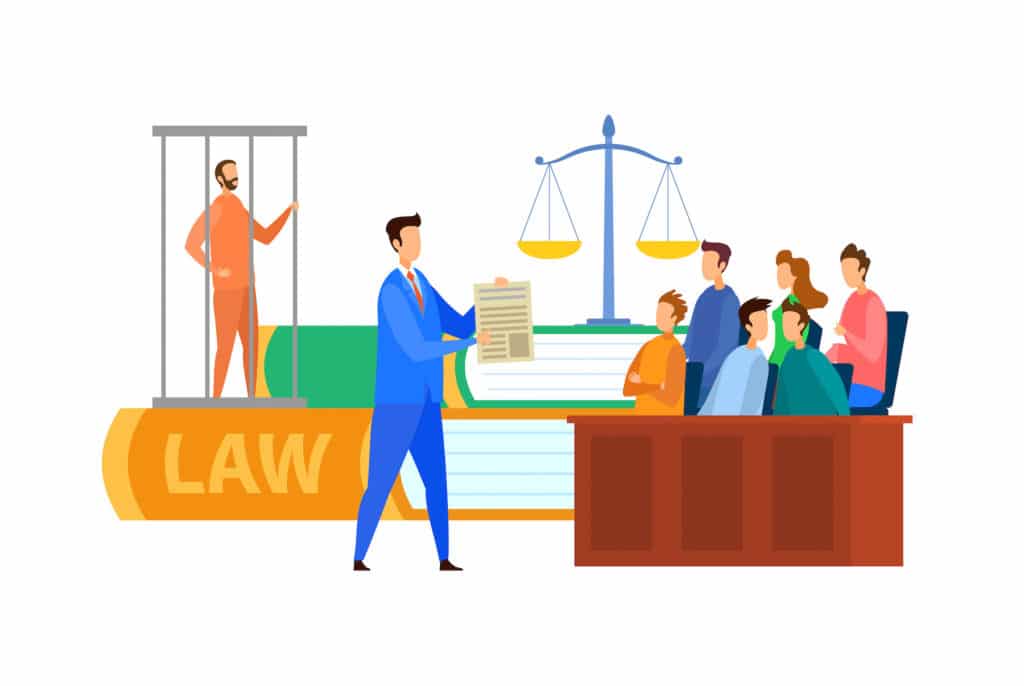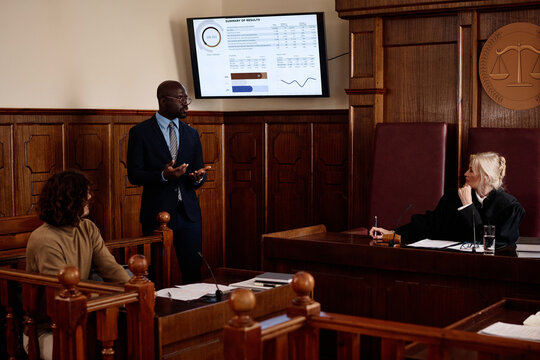Understanding the Art of Trial Presentations: Trick Techniques for Efficient Legal Arguments
Understanding the Art of Trial Presentations: Trick Techniques for Efficient Legal Arguments
Blog Article
Navigating the Intricacies of Test Presentations: Tips for Seamless Delivery and Engaging Debates
In the realm of lawful process, the art of trial discussion stands as an important determinant of success. As lawyers browse the detailed internet of court room dynamics, the capability to flawlessly deliver arguments and proof while astounding the jury's focus ends up being vital. The complexities inherent in trial discussions need a delicate balance of skill, skill, and method. By refining strategies that make certain a sleek distribution and crafting engaging disagreements that resonate with the audience, attorneys can dramatically boost their campaigning for. In a world where persuasion reigns supreme, understanding the complexities of trial presentations is not simply a choice yet a requirement for those seeking to dominate in the court.

Comprehending Test Goals
To properly navigate a trial, it is vital to have a clear understanding of the goals that need to be accomplished. Prior to entering the courtroom, lawful teams need to define their objectives and desired outcomes. These purposes serve as assisting principles throughout the test, forming approaches and influencing decision-making procedures.
Comprehending test purposes includes an extensive analysis of the situation, legal precedents, and the customer's finest passions. Trial Presentations. It requires a careful examination of the truths, recognizing vital problems, and anticipating possible difficulties. By setting specific and quantifiable objectives, lawyers can tailor their arguments and discussions to line up with the wanted outcomes
In addition, a clear grip of trial purposes makes it possible for legal teams to prioritize proof, witnesses, and legal debates properly. It permits the advancement of a meaningful story that resonates with the judge and court, reinforcing the overall instance discussion.

Organizing Proof Properly
Having a clear understanding of trial objectives lays the structure for organizing proof effectively in legal proceedings - Trial Presentations. By lining up the discussion of evidence with the preferred end results of the test, lawful groups can enhance their disagreements and improve their persuasiveness. One vital facet of arranging proof is categorization. Organizing proof based upon motifs or significance to certain legal aspects can aid enhance the discussion and make intricate info a lot more digestible for the judge or court.
An additional key component in arranging proof successfully is establishing a rational flow. Presenting proof in a meaningful and sequential way can aid construct a compelling narrative that sustains the legal arguments being made. In addition, utilizing aesthetic help such as timelines, charts, or graphes can additionally improve the organization of proof and help in clarifying complicated connections or series of events.
Moreover, ensuring that all proof provided is admissible and appropriate to the instance is vital. Unnecessary or inadmissible proof can interfere with the stamina of the disagreement and potentially hurt the reputation of the here and now party. A precise evaluation and choice process need to be undertaken to consist of just the most legitimately sound and impactful evidence in the trial presentation.
Crafting Convincing Stories
Crafting compelling stories plays an essential function in offering influential arguments during lawful you can try this out procedures. When creating a narrative for a test presentation, it is necessary to establish a clear story that highlights key points and links them in a systematic fashion. By weaving together proof, statement, and legal disagreements right into a natural and convincing story, lawful professionals can properly advocate for their clients and raise the possibility of a beneficial result in the courtroom.
Mastering Visual Aids
Effective use visual aids is vital to boosting the influence and quality of test discussions. Aesthetic help, when used tactically, have the power to simplify complicated info, enhance bottom lines, and leave a long lasting impact on the judge and jury. To master visual aids in test discussions, it is crucial to make certain that they are clear, succinct, and pertinent to the arguments being made.
When integrating aesthetic aids, such as charts, photos, charts, or timelines, into a test presentation, it is important to keep them visually appealing yet expert. The visuals need to complement the verbal debates, giving a graph of the information being discussed without frustrating the target market with unneeded information.
Additionally, experimenting the aesthetic help beforehand is imperative to make certain a seamless delivery throughout the test. Familiarizing oneself with the content, shifts, and timings of each visual aid can assist maintain the circulation of the discussion and avoid technical glitches that might emerge.
Supplying Impactful Closing Arguments
An engaging closing debate serves as the conclusion of a test presentation, encapsulating the core narrative and convincing the court and jury in the direction of a desirable decision. Begin by laying out the major arguments that support your client's placement, stressing why the evidence presented throughout the test supports your story.
Furthermore, including sob story can even more strengthen your closing argument. By humanizing the instance and attaching on a personal degree with the decision-makers, you can stimulate empathy and understanding, influencing their understanding of the facts offered. Additionally, reiterating the lawful criteria that must his comment is here be fulfilled for a beneficial ruling can reinforce the credibility of your position. Inevitably, a well-crafted closing debate must leave a long lasting perception, compelling the discretionary to rule in your customer's support.
Final Thought
In conclusion, understanding test presentations includes comprehending goals, arranging proof, crafting narratives, making use of aesthetic help, and delivering impactful look here closing arguments. By implementing these approaches effectively, legal representatives can provide their case effortlessly and make engaging debates in the court room. It is important to browse the complexities of test discussions with precision and ability to accomplish success in legal process.
By straightening the discussion of evidence with the desired end results of the test, legal groups can reinforce their disagreements and improve their persuasiveness (Trial Presentations). To grasp visual aids in trial discussions, it is crucial to guarantee that they are clear, succinct, and pertinent to the arguments being made
An engaging closing disagreement serves as the end result of a trial presentation, encapsulating the core narrative and convincing the court and court towards a favorable decision. Begin by laying out the primary debates that support your client's placement, emphasizing why the proof offered throughout the test supports your story.In verdict, understanding trial presentations entails understanding goals, organizing evidence, crafting narratives, using aesthetic help, and delivering impactful closing disagreements.
Report this page